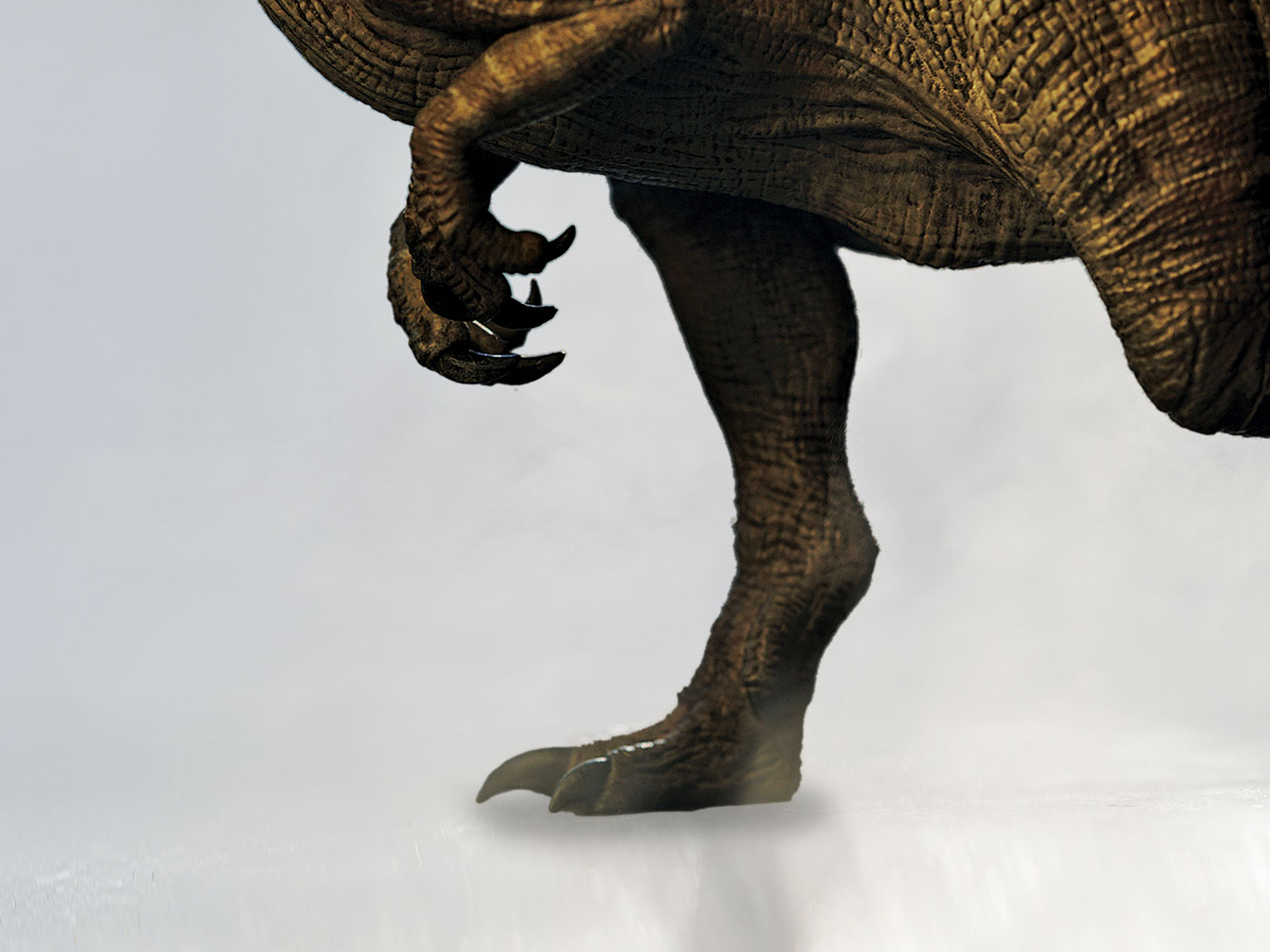Lucy, to TV audiences of the 1950s and 1960s, was a spunky red-headed actress. To our more educated schoolchildren today, however, "Lucy" means something quite different. She is the celebrated fossil that appears in textbooks as a hairy, semi-naked, upright-walking ape striding boldly across a treeless African landscape. Her jaw is set and she leaves behind her a set of trailing footprints. As the unquestioned icon of human evolution, her fame is comparable to that of the former actress. Why is it that all public school children have heard of this fossil? Let us consider Lucy and her species, Australopithicus afarensis.
The human evolution story usually begins with the more primitive australopithocines (literally, "southern apes") that transition into the genus Homo (or human), through either Homo habilis or Homo erectus, depending on who you talk to. Homo habilis is a mixed taxon of both human and ape remains, and has fallen into disrepute. As for Homo erectus, a great many suggest this category be subsumed into Homo sapiens. Thus "Lucy" and the afarensis fossils occupy a critical place in the human evolution story, squarely between that of the truly apish australopithocines and humans.
Lucy's skeleton was about 40% complete and was a remarkable discovery when unearthed by Don Johanson in 1974. The creature would have stood 3.5 feet tall, about the height of a chimpanzee. Its skull was grossly ape-like, and also about the size of a chimp's, with very little in the way of human-like features. Lucy possessed very long fingers with a decided curve to them, like modern apes possess for tree-swinging activities. From other A. afarensis finds, it is believed Lucy possessed long toes with a curvature that also suggested prehensile and arboreal behavior. Lucy's upright-turned shoulder joint enabled suspensory behavior and her hands, wrists, and arms were powerfully prehensile. And so you ask, what makes Lucy such a great missing link? Angles of bones in the (reconstructed) hip joint and knee joint suggest that Lucy spent part of her time walking upright. That is as strong as the evidence gets that she was related to humans. Virtually no anatomists will support Johanson's claim that Lucy was a habitual upright walker, yet this is what most textbooks boast.
There is one more piece of evidence that has been used to argue that Lucy was an upright walker: the Laotoli footprints. In strata comparable in age to those from which Lucy came are a set of very well defined fossil footprints. Remarkably, anatomists are unanimously agreed that the footprints are indistinguishable from those made by modern man on a beach. Rather than admit this as evidence that man and Lucy lived side-by-side in the past, it is claimed that an ape like Lucy must have made the footprints because "we all know" that man hadn't evolved yet. This, despite the fact that it is almost inconceivable that an austro-lopithocine foot could have done it! It is only by circular reasoning that this can be admitted as evidence for human evolution yet this is exactly what is being done in our public schools today.
If you want to know why Lucy is hailed the greatest of missing links it is because she is the best the evolutionist can come up with! There can be no other explanation. It is a credit to an educational establishment that banks on the ignorance of taxpayers that Lucy remains a "missing link."
* At the time of publication, William A. Hoesch, M.S. geology, was an ICR Research Assistant in Geology.
Cite this article: Hoesch, W. A. 2006. I Love Lucy? Acts & Facts. 35 (7).






















